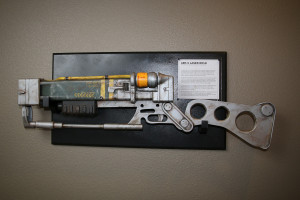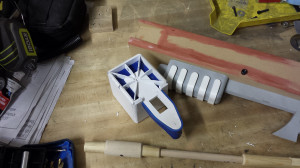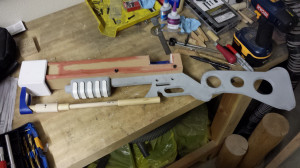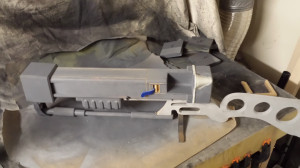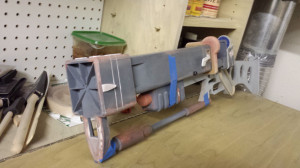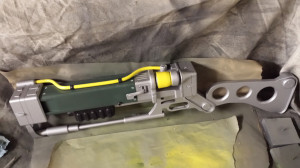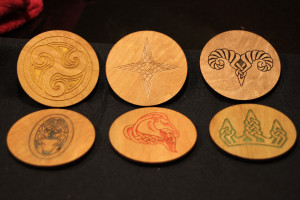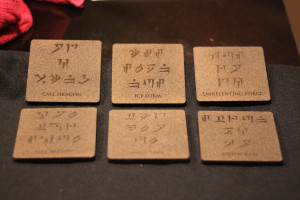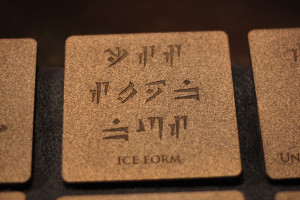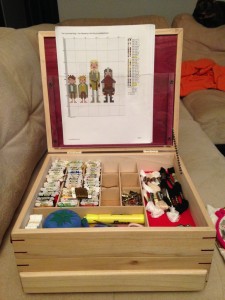 My friend Sarah enjoys knitting and needlepoint in her spare time. I noticed she kept her thread cards in one container, her scissors and pins in her sewing kit, and hoops and projects elsewhere. Wouldn’t it be nice, I thought, if she could keep all her needlepoint-related projects in one place?
My friend Sarah enjoys knitting and needlepoint in her spare time. I noticed she kept her thread cards in one container, her scissors and pins in her sewing kit, and hoops and projects elsewhere. Wouldn’t it be nice, I thought, if she could keep all her needlepoint-related projects in one place?
When I sketched up the plans, I knew that I wanted to have a partitioned area to keep the little plastic ‘cards’ of thread, an area for miscellaneous supplies (I think sewing enthusiasts call these items ‘notions’), an area for the ‘skeins’ of thread waiting to be put on the cards (not sure of the technical term for those), and an area for hoops when they aren’t in use.
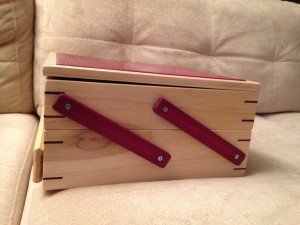 At first, I was going to have just one box with a lift-out tray. But I wanted to have three separate compartments. I figured I would put a drawer in the bottom for large, infrequently-used items, the lift-out tray for frequently used items, and the main bottom compartment for moderately sized, moderately-used items.
At first, I was going to have just one box with a lift-out tray. But I wanted to have three separate compartments. I figured I would put a drawer in the bottom for large, infrequently-used items, the lift-out tray for frequently used items, and the main bottom compartment for moderately sized, moderately-used items.
Instead of going with the lift-out tray, I decided to go with a fold-out style box, which I figured would be a bit more elegant and just as functional.
The box is made from Poplar with miter keys made from Purple Heart. The lid is Purple Heart with a Poplar Frame. I didn’t have a wide enough piece of Purple Heart for the lid, so I got to do my first book-matching rip on the table saw, and it turned out great.
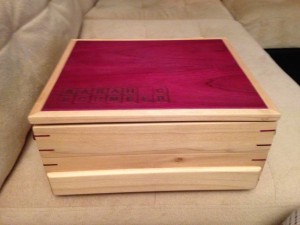 To keep her mother-in-law (another needlepointer) from purloining the box, I burned Sarah’s full name deep into the lid using a Scrabble™ tile font I found online. It’ll take a lot of belt sanding to get that name off the box.
To keep her mother-in-law (another needlepointer) from purloining the box, I burned Sarah’s full name deep into the lid using a Scrabble™ tile font I found online. It’ll take a lot of belt sanding to get that name off the box.
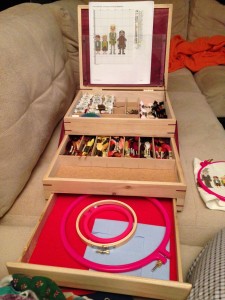
The lid is retained in an almost-upright position by a black chain on the right-hand side. Since the lid is a little wider than 11.5″, I took a couple of scrap pieces of Purple Heart and used them as standoffs for a piece of Lexan. That way, Sarah can keep needlepoint patterns with her projects.
Lessons Learned:In hindsight, I really wish I spent more time on getting the drawer flush with the front. It looks fine head-on, but it sticks out a bit on the profile shot.
